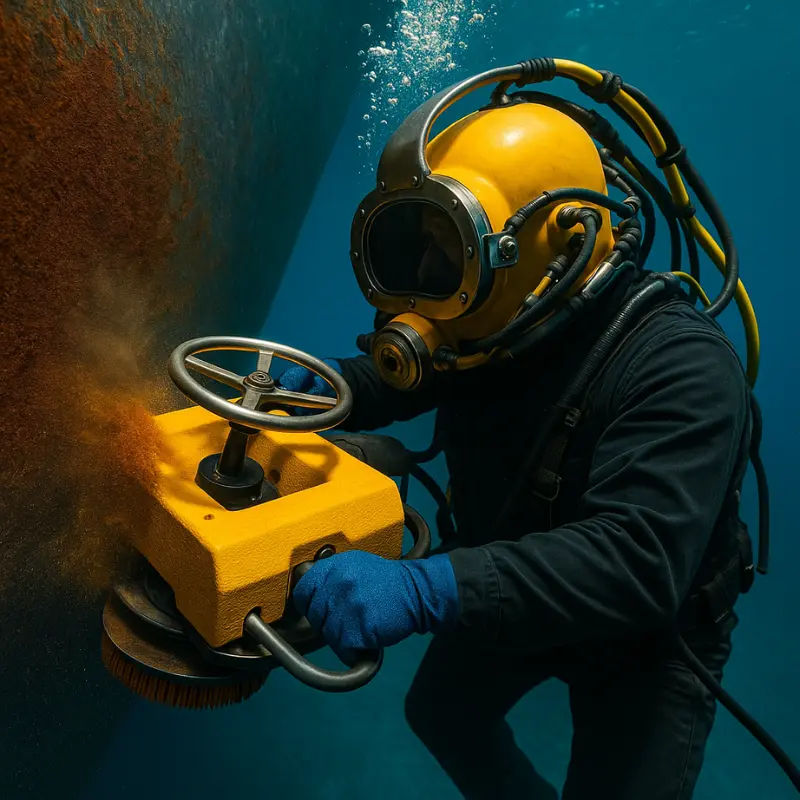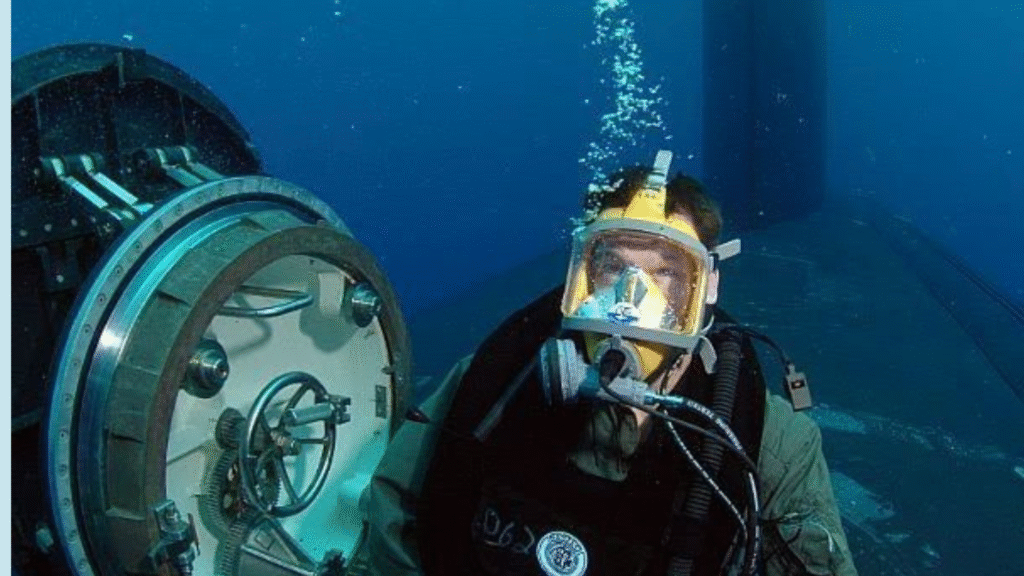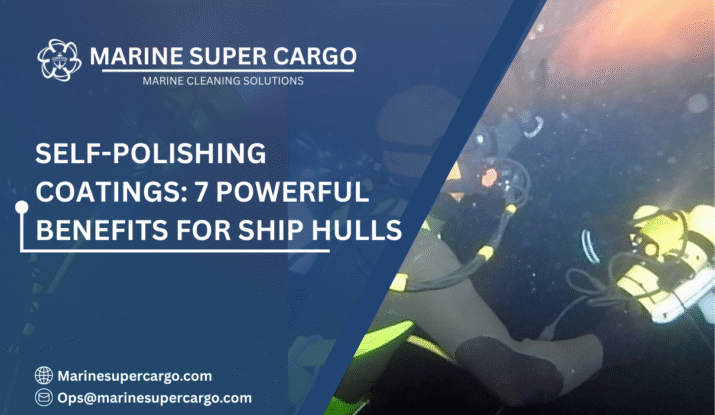Imagine your ship’s hull as the skin of a long-distance runner. Every barnacle, algae patch, or layer of slime is like an ankle weight slowing it down mile after mile. Now, think of Self-Polishing Coatings as the sleek running shoes that keep the runner light, agile, and efficient. These coatings are not just paint—they are advanced engineered layers that actively protect ships against marine fouling while ensuring consistent performance.
In the shipping industry, where every drop of fuel and every knot of speed counts, Self-Polishing Coatings (SPC) are game changers. They represent one of the most reliable and innovative antifouling solutions available today.
In this in-depth guide, we’ll explore what SPCs are, how they work, their benefits, environmental implications, compliance requirements, and the innovations shaping their future. By the end, you’ll know why ship owners, operators, and fleet managers are increasingly making this coating system their first choice.
What Are Self-Polishing Coatings?
At their core, Self-Polishing Coatings are antifouling paints built on a clever chemical principle. Instead of being a static coating, SPCs slowly “polish” away in seawater, exposing fresh biocide-rich layers over time. This means the coating surface stays smooth, slick, and resistant to fouling organisms like barnacles, algae, and slime.
- Traditional antifouling paints: Release biocides in an uncontrolled way, leading to uneven protection.
- SPCs: Wear down gradually and predictably, ensuring consistent fouling control and smoother surfaces.
Think of SPCs like a bar of soap in the bath. Each time you use it, a fresh layer is revealed while the old one is washed away. Similarly, a ship with SPC sails cleaner and faster for a longer period.

How Do Self-Polishing Coatings Work?
SPCs work on the principle of hydrolysis. The coating is based on a copolymer matrix, often involving organotin-free binders today (since organotin compounds were banned by the International Maritime Organization under the IMO’s AFS Convention).
Here’s the process:
- Seawater triggers a chemical reaction with the outer layer of the coating.
- Fresh biocides are exposed at a controlled rate.
- Fouling organisms are repelled, reducing drag and hull roughness.
- Polishing action maintains smoothness, ensuring efficient hydrodynamics.
This results in a predictable service life, making SPCs a preferred solution for ships that operate at consistent speeds or idle intermittently at ports. Learn also about underwater hull cleaning in Ecuador.
⚓ Get Your Ship Cargo Ready with Marine Super Cargo 🚢
— Marine Super Cargo (@Marinsupercargo) September 12, 2025
Your next voyage begins with a vessel that’s clean, compliant, and cargo-ready. At Marine Super Cargo, we deliver top-quality marine services: pic.twitter.com/3627aoKAZo
Why Self-Polishing Coatings Matter in Modern Shipping
Shipping today sits at the crossroads of economics and environmental pressure. Rising fuel costs, stricter emissions standards ( MARPOL Annex VI), and investor demand for greener practices have made hull cleanliness more than just an option—it’s a necessity.
Without effective protection:
- Fouled hulls increase fuel consumption by up to 40%.
- Excess drag leads to missed schedules and costly delays.
- Non-compliance with biofouling regulations can result in port charges, fines, or denied entry.
Self-Polishing Coatings meet this challenge head-on by keeping your hull clean, compliant, and efficient over longer dry-docking cycles.
Key Benefits of Self-Polishing Coatings
Self-Polishing Coatings bring a blend of cost savings, compliance, and operational efficiency. Let’s break them down:
- Fuel Efficiency Gains
Ships with SPC can save up to 10% in fuel compared to conventional coatings, lowering operational costs dramatically. - Extended Dry-Docking Cycles
SPCs usually last up to 5 years, helping operators plan better maintenance schedules and reduce downtime. - Environmental Compliance
SPCs are organotin-free and aligned with global conventions like the IMO’s AFS Convention and MARPOL Annex VI, reducing toxic impacts while meeting port state requirements. - Hull Smoothness & Speed
A smoother hull reduces friction with water, improving speed and reducing power demands from the main engine. - Predictable Coating Life
The controlled release and polishing action mean predictable wear, making coating performance more reliable and measurable. - Lower Carbon Emissions
Every ton of fuel saved equals fewer emissions, aligning fleets with IMO 2030 and 2050 decarbonization goals. - Reduced Biofouling Risks
By keeping hulls cleaner, SPCs drastically cut the risk of invasive species transfer—an increasing regulatory focus for ports like New Zealand, California, and Australia.
⚓ Get Your Ship Cargo Ready with Marine Super Cargo 🚢
— Marine Super Cargo (@Marinsupercargo) September 12, 2025
Your next voyage begins with a vessel that’s clean, compliant, and cargo-ready. At Marine Super Cargo, we deliver top-quality marine services: pic.twitter.com/3627aoKAZo
Regulatory Framework and Compliance
Ship operators cannot afford shortcuts here. Regulations affect not only environmental performance but also the ship’s commercial viability.
Key frameworks that connect directly to Self-Polishing Coatings include:
- IMO’s AFS Convention: Banned toxic organotin compounds in antifouling paints. Modern SPCs comply with this.
- MARPOL Annex VI: Emissions control through better hull performance. SPCs reduce drag and fuel burn.
- IMCA guidelines on vessel efficiency: Stress the importance of coatings, fouling control, and underwater hull inspections.
- IAPH biofouling initiatives: Global ports increasingly demand compliance with biofouling management best practices.
Beyond fines, non-compliance can damage your reputation with charterers, investors, and regulators.
Comparing SPCs with Other Coatings
| Type of Coating | Performance | Longevity | Environmental Compliance | Cost Efficiency |
|---|---|---|---|---|
| Conventional Antifouling | Moderate | 2-3 yrs | Limited (biocide-heavy) | Low |
| Self-Polishing Coatings | High | 4-5 yrs | High (AFS-compliant) | High |
| Foul-Release Coatings | Very High | 5+ yrs | Very High (silicone-based) | High upfront |
SPCs strike the ideal balance between performance, cost, and compliance. While foul-release coatings can outperform SPCs in niche cases, they are often expensive and suited for high-speed vessels.
The Future of Self-Polishing Coatings
Innovation is only accelerating in marine coatings. Research is focusing on:
- Biocide-free SPCs: Using hydrolysis without leaching hazardous compounds, aligning with green shipping goals.
- Nanotechnology and smart coatings: Reactive hull surfaces that adapt depending on voyage conditions.
- Digital monitoring: Leveraging AI and IoT sensors to measure hull performance and optimize coating replacement.
We can expect smarter, safer, and cleaner coatings driving sustainability and operational efficiency in the years to come.

Practical Tips for Ship Operators
If you’re considering Self-Polishing Coatings, here’s what to keep in mind:
- Match coating choice to your ship’s voyage profile (speed, idle periods, operating waters).
- Plan SPC application during dry-docking to align with long-term schedules.
- Regularly inspect hulls via divers or ROVs to verify performance between dockings.
- Monitor fuel consumption to quantify the coating’s return on investment.
- Keep records for compliance audits by flag states and port authorities.
Conclusion
When it comes to balancing operational costs, regulatory demands, and sustainability goals, Self-Polishing Coatings rise as one of the most practical solutions for modern shipping.
Here are three key takeaways:
- They provide predictable, lasting protection while boosting efficiency and compliance.
- They help you save fuel, reduce emissions, and maintain smoother hull performance.
- They support global environmental goals without compromising your ship’s commercial competitiveness.
If you’re looking to strengthen your fleet’s hull performance and compliance strategy, start by exploring advanced solutions at CleanShip.co.
FAQ:
Q1. How long do Self-Polishing Coatings last on average?
SPCs usually last 3–5 years, depending on operating profile and water conditions, extending dry-docking intervals.
Q2. Are Self-Polishing Coatings environmentally safe?
Yes, modern SPCs are organotin-free and comply with IMO’s AFS Convention, minimizing harm to marine life.
Q3. Do SPCs work for ships that stay idle in port?
Yes, but performance varies. SPCs are most effective when ships operate at consistent speeds, though idle protection is improving.
Q4. How do SPCs affect my fuel bills?
They cut drag and friction, lowering fuel consumption by up to 10%, which can translate into millions saved annually for large vessels.
Q5. Are SPCs more expensive than traditional coatings?
Initial costs are higher, but savings from reduced fouling, fuel efficiency, and extended dry-docking cycles far outweigh the investment.


